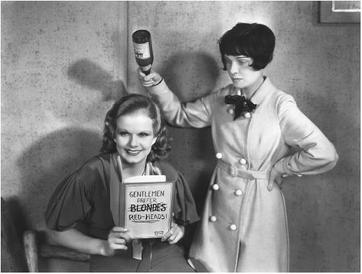Joseph Graybill was born on April 17, 1887 in Kansas City, Missouri. The family was primarily based in Kansas and Wisconsin, with Graybill seeking education at the St. John’s Military Academy in Salina and the Milwaukee Academy. At the age of 18, Graybill made his theatrical debut, joining the Thanhouser Stock Company in Milwaukee. From there, he traveled with a variety of theatrical companies, working with Henry Woodruff in a production of “Brown of Harvard” and doing juvenile leads and comedic parts in productions by Henrietta Crosman and Henry E. Dixey. It was his performance in “The Witching Hour” in 1908 that really began to attract the attention of writers and critics.
In an interview with the Chicago Daily Tribune from the same year, Graybill spoke at length about his process from bringing the the murderous character of Clay Whipple to life. The reporter wrote, “he works himself up to a pitch of excitement so that he breathes hard in the wings before he goes on...the young actor has to practically hypnotize himself to keep neutral until the instant of the tragedy.” Even at the age of 21, Graybill clearly had a gift for losing himself in his roles. Following this successful run, Graybill did a tour in a supporting role in “Awake at the Switch” on vaudeville before joining the industry which would bring him the most recognition.
In 1910, Graybill joined Biograph. His timing was such that he got to work on-screen with some of the earliest actors, actresses and directors to grace the big screen. He worked with the likes of Mary Pickford, Blanche Sweet, Mack Sennett and Henry B. Walthall, and worked under a relatively new director by the name of D.W. Griffith. Because he was still new to the film world, there was a bit of competition between Graybill and the veteran actors. Linda Arvidson (Griffith’s wife at the time) wrote in her memoir that Griffith was very pleased with Graybill very early on. In an effort to mess him up, fellow actors Charlie West and Arthur Johnson tried to get him drunk on set in the hopes that he would flub his performance, but to their dismay, he held his own and only impressed Griffith more. It was in these Biograph performances that Graybill began to establish a following.
Mary Pickford, Mack Sennett, Joe Graybill and Marion Sunshine in "The Italian Barber"
One of his most interesting early roles is that of “The Stranger’ in Griffith’s “The Painted Lady” from October 1912. Starring a young Blanche Sweet, Graybill plays a burglar who users Sweet’s attraction to him as a means to rob her father. His plan backfires, however, when Sweet decides to take matters into her own hands.
Graybill worked for Biograph in New York and California before making the rounds to other big-name companies of the day. He worked for Lubin, IMP, Keystone and the Victor Company before joining the World’s Best Film Company. Upon joining World’s Best, it was announced in January 1913 that Graybill had been tapped to play the lead in a new “animal picture.” it was to be filmed in Jacksonville, Florida, under the title “The Wizard of the Jungle,” and it would later become Graybill’s best known film. His turn as the jealous Captain Hanscomb earned him a glowing review from Moving Picture World. They said he was at his best playing jealous lovers and that his role in “Wizard” was no exception. He joined Pathe around the release of “Wizard” and seemed to be moving on to even better and bigger opportunities. Unfortunately, tragedy struck.
Joseph Graybill in "The Painted Lady"
While filming with Pathe in Jersey City, Graybill suddenly collapsed. The Morning Telegraph reported that Graybill had been in a highly nervous state for several weeks “due to his tendency to worry.” (Considering the heightened state of excitement that Graybill would get himself into for his stage performances, this doesn’t seem that unlikely.) After dealing with this condition for several weeks, Graybill suffered a nervous breakdown on set. He collapsed and instantly lost the ability to see. Sources report that Graybill was so determined to finish filming, that he insisted that he be directed through the scenes using the director’s voice and commands. When filming ceased, he collapsed again and was hospitalized, later to be diagnosed with spinal meningitis. After spending a few days fighting for his life, Graybill died on August 3, 1913 at the age of 26. His mother and sister oversaw the service, with Pathe players in attendance and actors from a variety of companies acting as his pallbearers.
The issue of Moving Picture World that was released the day before his death was particularly poignant, as it spoke highly of Graybill’s strong body of work, and how they expected “the actor who wore a mustache” to continue with great performances into the future.
Unfortunately, Graybill was the first of the many bright young stars who would see their lives and careers end far too soon -- a list of stars which would include the likes of Wallace Reid, Rudolph Valentino and even Graybill’s former co-star Mabel Normand.
Blanche Sweet with Joseph Graybill in "The Painted Lady"
What would Graybill have gone on to achieve? His range was respectable, and though he had parted ways with Biograph, I can easily see him rejoining with Griffith’s independent company, playing roles that fellow Griffith player Bobby Harron (who also died tragically at a young age) excelled in. His filmography isn’t as extensive as other Griffith players, but we’re lucky to have surviving prints of many of his Biograph films. Click here for a playlist featuring some of the films of Joseph Graybill. Or check out "The Painted Lady" courtesy of Fandor below.






















